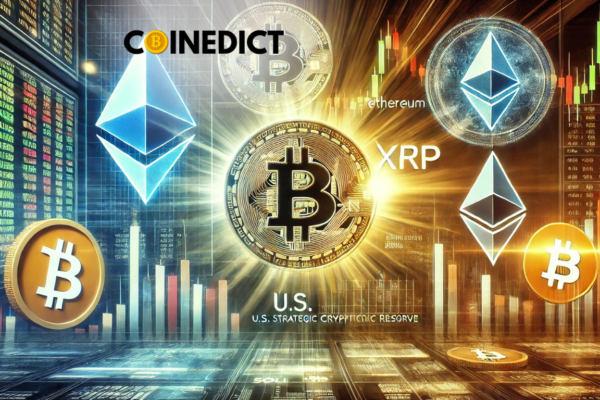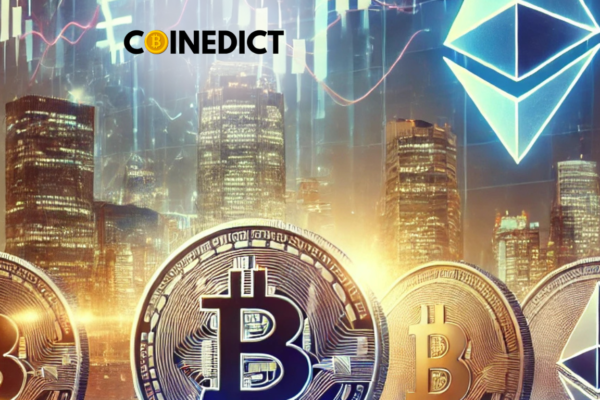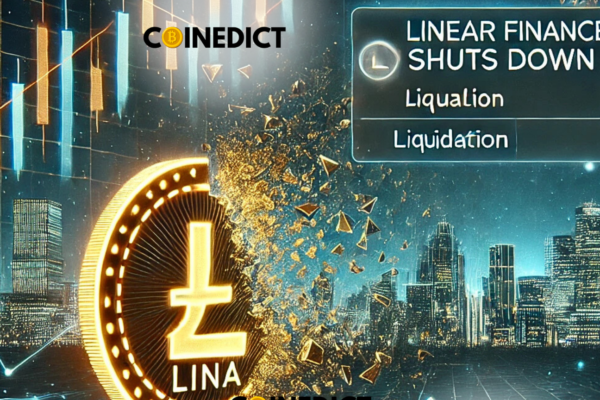
Sony Singapore Steps Into Crypto – Now Accepting USDC for Online Shopping
Sony is making a bold move into the crypto space! 

Sony is making a bold move into the crypto space! 

Global asset management giant BlackRock has officially secured approval from the UK’s Financial Conduct Authority (FCA) to operate as a crypto asset firm, paving the way for its new Bitcoin exchange-traded product (ETP) in Europe. This approval makes BlackRock the 51st company registered with the FCA, joining major financial players like Coinbase, PayPal, and Revolut. Notably, the FCA has only approved 14% of applications, signaling the regulator’s strict standards. Many firms were reportedly rejected due to incomplete or low-quality submissions. A Major Step for Bitcoin Investment in Europe BlackRock’s iShares Bitcoin ETP (IB1T) is already trading on Euronext Paris and Amsterdam. The fund initially launched with a 0.15% fee waiver that will last until the end of 2024, after which it will increase to 0.25%, matching CoinShares’ $1.3 billion physical Bitcoin ETP—the largest in Europe. Each IB1T share is backed by real Bitcoin, securely held by Coinbase. This product allows investors to gain exposure to Bitcoin without directly holding the cryptocurrency, making it an attractive option for institutional and retail investors alike. BlackRock’s Growing Influence in Crypto This European launch follows the success of BlackRock’s iShares Bitcoin Trust (IBIT) in the U.S., which has amassed over $48 billion in assets. The company is using a Swiss-based special-purpose vehicle to ensure compliance with European financial regulations. The move signals growing institutional demand for Bitcoin investment products outside of North America. BlackRock’s CEO Larry Fink recently expressed concerns about rising U.S. debt, suggesting that excessive government spending could weaken the U.S. dollar’s dominance and make Bitcoin a more attractive store of value. As interest in regulated Bitcoin investment options rises, BlackRock’s entry into the European market could be a game-changer for institutional adoption across the region.

Toulouse, France – In a bold move toward the future of payments, the southern French city has become the first in Europe to allow residents to buy public transport tickets using Bitcoin and other cryptocurrencies. Since March 17, commuters can pay for metro, tram, bus, and even cable car rides with digital assets—a milestone for crypto adoption in everyday life. How It Works Passengers can purchase tickets through an Android app developed by Paris-based fintech company Lyzi, which supports Bitcoin and over 70 altcoins. Transactions are instantly converted to euros, with Binance Pay among the payment options. The system is experimental, according to Deputy Mayor Sacha Briand, who emphasized that Toulouse wants to test real-world crypto usage before committing long-term. Why It Matters France has been steadily embracing crypto-friendly policies, and Toulouse’s initiative reflects growing interest in digital currencies. A 2024 Gemini report found that 18% of French citizens own crypto, and cities like Cannes are reportedly working on similar payment systems. However, challenges remain: Global Crypto-Friendly Cities While Toulouse leads in Europe, other cities worldwide have already integrated crypto into daily life: The Bigger Picture Toulouse’s experiment could pave the way for broader crypto adoption—if regulators streamline tax rules and users embrace the convenience. As Lyzi expands crypto payments to pharmacies, coworking spaces, and major retailers like Printemps, France is positioning itself as a leader in real-world crypto use.

Tokyo is getting serious about cryptocurrency regulation. In a move that could reshape Japan’s digital asset landscape, financial regulators are preparing stricter rules to prevent insider trading and protect investors in the volatile crypto market. What’s Changing? Japan’s Financial Services Agency (FSA) is working on a plan to treat cryptocurrencies more like traditional financial products. Right now, digital assets like Bitcoin are classified mainly as payment methods. But under the proposed changes, they’d fall under the same law that governs stocks and securities – though likely in their own special category. The shift comes as crypto trading explodes in Japan. The country now has about 7.1 million active crypto accounts – more than triple the number from just five years ago. With this boom has come growing concerns about shady practices and investors getting burned. Why It Matters If the changes go through: The FSA hasn’t spelled out exactly how enforcement would work, but the message is clear: Japan wants to clean up crypto trading while still allowing the industry to grow. A Balancing Act Interestingly, this crackdown comes just weeks after Japan moved in the opposite direction on some crypto rules. In March, regulators eased restrictions on stablecoins and crypto brokerages to make it easier for businesses to operate there. It’s all part of Japan’s careful dance – trying to encourage innovation while protecting consumers in a market that’s still finding its footing. The proposed bill could reach Japan’s parliament as early as 2026. For crypto investors and businesses, the takeaway is simple: Japan’s crypto wild west days may be coming to an end. As one Tokyo-based trader put it: “The rules are growing up along with the market.”

The world of finance is evolving, but traditional payment systems remain slow, expensive, and outdated. Businesses and individuals worldwide struggle with high transaction fees, long settlement times, and, in many cases, limited access to banking services. This is where stablecoins and on-chain liquidity are stepping in to fill the gaps—offering a faster, more affordable, and borderless alternative to traditional payments. The Problem with Traditional Payments For decades, global transactions have relied on inefficient banking systems like SWIFT, which often takes days or even weeks to process cross-border payments. On top of delays, businesses are forced to pay multiple fees, including sending fees, receiving fees, intermediary bank charges, and even foreign exchange costs. Even digital payment platforms like PayPal, Wise, and Stripe—while improving accessibility—still depend on legacy financial networks, meaning they inherit the same inefficiencies that slow down and complicate global transactions. As global cross-border settlements surge past $190 trillion, the demand for real-time, cost-effective financial solutions has never been higher. The Rise of Stablecoins and On-Chain Liquidity Unlike traditional banking, stablecoins—digital currencies pegged to fiat assets like the U.S. dollar—operate 24/7 without intermediaries. The numbers prove their impact: 







XRP is facing a tough battle as its price continues to slide, marking its fourth consecutive day in the red. Currently trading at $2.31, the token has lost steam despite a string of positive developments for Ripple. Analysts warn that if key support levels break, XRP could plummet to $1. What’s Dragging XRP Down? Like other altcoins, XRP has been hit hard by economic concerns and geopolitical tensions. The latest blow comes from: 









The crypto world is about to witness a major shake-up as Lightchain AI introduces its Meme Coin Launch Pad, a dedicated platform designed to simplify and revolutionize meme coin creation. Alongside this launch, the company is rolling out LCAI, its own utility token, which will fuel transactions within the ecosystem. Why Meme Coins Matter More Than Ever Meme coins started as a joke, but they’ve become a driving force in the crypto market, leading to mass adoption and billion-dollar valuations. Dogecoin and Shiba Inu proved that a strong community can turn a meme into a serious financial asset. However, launching new meme coins remains a challenge—fraud, technical barriers, and lack of innovation often slow down progress. How Lightchain AI’s Launch Pad Changes the Game Lightchain AI aims to remove these obstacles by providing a secure, AI-powered platform that streamlines meme coin creation while ensuring transparency and security. Here’s what makes it different: 





The cryptocurrency market has taken a heavy hit, with the top five cryptocurrencies losing a staggering $659 billion from their 2025 peak, according to data from Cryptoquant. Ethereum and Solana Take the Hardest Fall Ethereum (ETH) and Solana (SOL) have seen the biggest losses, with Ethereum’s market cap plunging 44% to $240 billion, while Solana fell 43% to $73 billion. In contrast, Bitcoin (BTC) and Binance Coin (BNB) have been more resilient, with Bitcoin’s market cap dropping 18% to $1.735 trillion, and BNB losing 15% to $91 billion. Cryptoquant’s analysis suggests that Bitcoin and BNB suffered the least severe drawdowns, with both still holding strong against their historical highs. Meanwhile, Ethereum’s price has entered what analysts call an undervalued territory, with its ETH/BTC ratio hitting its lowest point since January 2020. XRP’s Rally Stalls Amid Market Uncertainty XRP initially benefited from optimism following Donald Trump’s election win, pushing its market cap from $30 billion to $142 billion by March 2025. However, that momentum has now fizzled out, with active wallet addresses shrinking to the 20K-40K range, signaling declining network activity. Bitcoin’s Sentiment Hits a Low Point Bitcoin’s market sentiment remains weak, as Cryptoquant’s Bull Score Index—which tracks investor optimism—dropped to 20, its lowest level since January 2023. Analysts warn that if the score stays below 40, it could indicate a prolonged bear market similar to previous downturns. What’s Next for Crypto? While Ethereum and Solana have struggled, Bitcoin and Binance Coin have held up better, reinforcing their stability in volatile conditions. However, Cryptoquant’s report suggests that XRP’s future growth will depend on increased network activity, while Ethereum’s underperformance has reignited debates about its long-term valuation. The market remains divided—will this downturn continue, or is a recovery on the horizon?

A massive cryptocurrency scam has been shut down in Ezhou, China, where 34 people have been sentenced to prison for running a fake crypto trading platform called OURBIT. Over the course of a year, the fraudulent site stole $64 million (460 million yuan) from nearly 30,000 investors, luring them in with promises of high returns and fake trading features. How the Scam Worked The fraudsters faked everything—from trading pairs and price charts to licenses supposedly from Singapore, the U.S., and the U.K.. The platform wasn’t connected to any real crypto exchanges, and every trade, price movement, and account balance was manipulated behind the scenes to ensure that users always lost money. Victims were recruited through WeChat groups, where scammers posed as “expert traders” and shared fake profit screenshots to create an illusion of success. They even hired fake investors to cheer them on in group chats. Once users invested, they were pressured into high-risk trades designed to wipe out their funds. When someone tried to withdraw profits, the platform either froze their account or demanded more money to “unlock” their funds—only to steal that too. Court Crackdown and Sentencing After investigating the operation, the Ezhou Court ruled that OURBIT was nothing more than a fraud machine built to steal user funds. Cheng and 33 other defendants were found guilty of fraud and sentenced to 3 to 12 years in prison, along with heavy fines. The court also issued a public warning, reminding investors that crypto trading in China is not legally protected, meaning victims often can’t recover their lost money. Lessons from the Scam 




The cryptocurrency market has seen a massive downturn, wiping out $659 billion from its peak in 2025, according to a new analysis from CryptoQuant. While Bitcoin and Binance Coin (BNB) have managed to hold their ground relatively well, Ethereum (ETH) and Solana (SOL) have suffered the most significant losses. Ethereum and Solana Lead the Market Decline Ethereum’s market cap has dropped 44%, now standing at $240 billion, while Solana has plunged 43% to $73 billion. These sharp declines highlight the intense volatility in the altcoin space, with investors reassessing their positions. On the other hand, Bitcoin (BTC) and Binance Coin (BNB) have fared much better. Bitcoin’s market cap is down just 18%, sitting at $1.735 trillion, while BNB has seen a 15% drop to $91 billion. The resilience of these two assets suggests that, despite the market’s struggles, investor confidence in Bitcoin and BNB remains stronger than in many altcoins. Ethereum Hits Its Lowest Value Against Bitcoin Since 2020 CryptoQuant’s data reveals that Ethereum has reached a historically undervalued level relative to Bitcoin. The ETH/BTC ratio has fallen 72% since September 2022, marking its lowest level since January 2020. Bitcoin’s market sentiment also remains weak, with CryptoQuant’s Bull Score Index at 20, the lowest reading since early 2023. The index, which measures investor confidence, suggests that the market lacks the momentum for a sustained rally in the near term. If the score stays below 40 for an extended period, it could indicate that the bearish phase is far from over. XRP’s Short-Lived Surge and Market Uncertainty XRP initially experienced a major rally after Trump’s 2024 election victory, with its market cap jumping from $30 billion to $142 billion by March 2025. However, the excitement appears to have cooled off, with active addresses on the XRP Ledger now down to 20K-40K. The divergence in performance among top cryptocurrencies underscores the uncertainty surrounding the market’s next move. Ethereum and Solana are struggling to recover, while Bitcoin and BNB remain relatively stable. Whether the market is headed for a deeper correction or preparing for a rebound remains to be seen. 

Linear Finance, a cross-chain synthetic asset protocol, has officially announced its shutdown, marking the end of its multi-year journey. The project cited financial difficulties and Binance’s recent decision to delist its LINA token as the final straw that made operations unsustainable. What Led to Linear Finance’s Collapse? Despite gaining early traction after its launch in 2019-2020, Linear Finance struggled to generate stable revenue. The team relied on personal contributions and token liquidations to keep the project afloat, but this model proved unsustainable in the long run. The situation took a sharp turn for the worse when Binance delisted LINA, causing the token’s value to crash by 65%. This massive drop wiped out much of the project’s market capitalization, making it impossible to continue operations. What’s Next for Users? Linear Finance has assured its users that it will provide detailed instructions on how to close their positions and liquidate assets. The team will outline the timeline for this process to ensure a smooth exit for its remaining community members. A Farewell Message from the Team In its final statement, Linear Finance expressed gratitude to its supporters, acknowledging the community’s belief in its vision. While the project is shutting down, its legacy serves as a cautionary tale for DeFi startups—highlighting the importance of financial sustainability and the risks of relying too heavily on centralized exchanges. As the DeFi space continues to evolve, Linear Finance’s closure is a reminder that long-term success requires more than just innovation—it demands a solid, self-sustaining business model.

The crypto world is watching closely as Paul Atkins, former SEC commissioner and Trump’s pick to lead the agency, moves closer to confirmation. His appointment could bring a major shift in how crypto is regulated in the U.S., potentially ending years of tough enforcement under Gary Gensler. Atkins has long been a supporter of clearer, structured regulations that encourage crypto innovation rather than stifling it with uncertainty. If confirmed, he is expected to introduce a more balanced regulatory framework—one that protects investors while allowing the industry to grow. Regulatory Reset? What Atkins Brings to the Table Atkins is scheduled to testify before the Senate Banking Committee, where he will outline his vision for a transparent and predictable approach to crypto regulation. He has criticized the SEC’s previous tactics, arguing that unclear rules and aggressive crackdowns have driven innovation overseas instead of keeping the U.S. at the forefront of blockchain development. His stance is welcomed by many in the crypto industry, who believe his leadership could end the SEC’s era of enforcement-first policies and replace it with fairer, pro-innovation guidelines. Crypto Industry Cheers, but Critics Sound the Alarm Atkins has strong backing from crypto advocates, but not everyone is on board. Critics, including Senator Elizabeth Warren, have raised concerns about his past ties to major financial players. 

